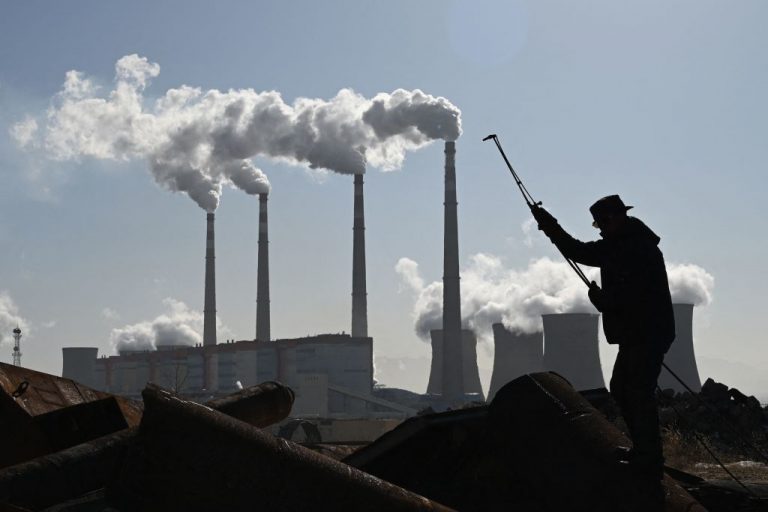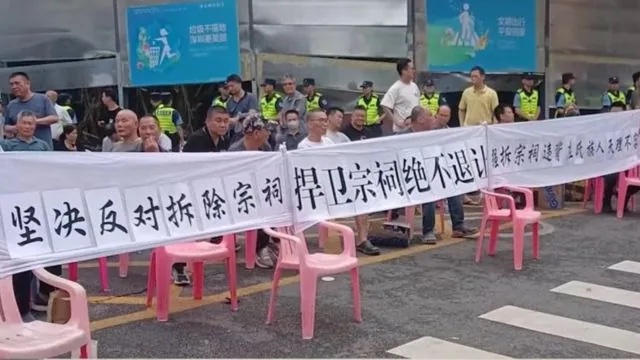News analysis
Since late August, 20 provinces in China have been experiencing power outages or rationing, severely impacting industrial production and people’s daily lives. Meanwhile, coal prices have continued soaring. According to the country’s National Bureau of Statistics, from late August to early October, thermal coal prices have risen by more than 45 percent.
In September, China increased its coal imports to counteract the outages as 70 percent of the country’s electricity is coal powered. According to customs data, the country imported 33 million tons of coal in September, totaling 230 million tons of coal thus far.
In recent days, most areas in eastern and central China have seen strong winds and extreme weather changes, with temperatures in some provinces dropping by 10 degrees overnight.
Jilin, Heilongjiang, and Liaoning — the three provinces making up Northeast China — suffered the most severe power shortages last month. Those three, along with Inner Mongolia and Gansu to the west, have begun winter heating, further straining already-tight coal supplies.
Success
You are now signed up for our newsletter
Success
Check your email to complete sign up
To make matters worse, northern China’s Shanxi Province, which produces the most coal of any region in the country, has seen continuous bouts of heavy rain and flooding that contributed to the shutdown of 60 coal mines throughout the province. This has further strained China’s dwindling stocks of coal to provide heating and electricity.
Political circus reveals long-term concerns
On Oct. 8, Chinese Premier Li Keqiang visited a thermal power plant in Shunde, a district in Guangdong Province. The premier said that the increase in electricity prices would not cause a spike in expenses because inflation was based on food prices, and not coal or electricity.
Li Keqiang’s words revealed a reality of the country’s inflation rates: China’s consumer price index does not include a number of critical expenses such as housing, electricity bills and consumption. And so the government’s claims that it has lifted 100 million people out of poverty since 2012 simply do not add up, as residents report that the cost of living has risen exponentially.
Furthermore, experts say there is actually no shortage of coal in China, and existing coal production is not being pushed to its full capacity. So why is China importing such large amounts of coal from other countries? Many believe it is to gain full control over the coal market and supply chain through state-owned enterprises. In order to achieve this goal, in addition to importing mass amounts of foreign coal to gain control on market prices, other methods have also been adopted, these include the elimination of so-called “outdated production” techniques, enhanced mineral management, and heightened protocol in the extraction and production processes.
Even the country’s dirtiest coal has risen in price. Bloomberg reported that the price of a variety of lignite coal surged to $110 to $120 a ton this week due to rising demand and falling production from mines in Kalimantan — a huge rise from last year, when shipments were being sold for as little as $20 to $25 per ton.
Of China’s 28 provinces, 24 have coal deposits. The sum of China’s top producing provinces is 3.5 billion tons, accounting for 90 percent of the country’s total coal production. With the country’s energy crisis mainly concentrated in the economically challenged areas along the eastern coast, this has highlighted the problem of transporting coal to and from these rural areas to counteract the rising number of power outages.
China’s electricity supply is handled by two state-owned enterprises; one is the State Grid Corporation of China, and the other is China Southern Power Grid.
So why are there so many new coal-fired power plants being built despite there already being established ones? Experts believe it has to do with China’s carbon trading market. The establishment of power plants was not intended to generate more electricity, but to obtain a carbon emission quota and then capitalize on the sale of carbon emission rights.
According to China’s “Electric Power Law “, the text stipulates, ” the prices of electricity, refers to the feed-in price for electric power producers, the price of mutual supply between power grids, and the price of electricity sold on the grid. Electricity prices are subject to a unified policy, unified pricing principles and hierarchical management. The price of electricity is determined by the National Development and Reform Commission based on electricity sales.”
China’s electricity prices have not been adjusted for over a decade.
Appeasing climate critics
On the 100th anniversary of the Chinese Communist Party’s founding on July 1, Chinese leader Xi Jinping held a grand celebration in Beijing. The government of Qinshui County in Shanxi required all coal mines in the county to suspend production from June 18 to July 2. The government of Shanxi’s Yangcheng also required all coal mines to cease production from June 19 to June 26, and gradually resume after July 2.
Residents were familiar with government issued suspension notices when important holidays such as the People’s Republic of China (PRC) National Day and Chinese New Year approach. It was important to put on a show that China’s notorious pollution issues and poor air quality were being curbed. The government also warned residents that no traffic accidents or ruckus of any kind were allowed while international visitors were in town.
On Feb. 5, 2016, the PRC State Council issued the “Opinions of the State Council on Resolving Excessive Capacity in the Coal Industry and Realizing Development”, which mentioned that the work goal is, “Starting from 2016, it will take 3 to 5 years to cut 5 million tons of coal production capacity, and to reduce or restructure 500 million tons, greatly reducing coal production capacity and moderately reducing the number of existing coal mines.”
The statement was in keeping with Beijing’s pledge to achieve carbon neutrality by 2060.
According to Asia Times however, China’s increased coal consumption, production and power development are inconsistent with Paris Climate Accord goals, under which non-OECD Asia’s coal power generation needs to be reduced by at least 63 percent by 2030 and then totally phased out by 2037.Meanwhile, some overseas Chinese commentators believe the red-tape inconsistencies point to a vital goal of the CCP, which is seen in the widespread phenomenon of guo jin min tui (the state-controlled economy grows stronger at the expense of the private sector). In recent years, the Party has brought more businesses under its fold, especially as the economy worsens under heightened U.S.-China trade tensions and the coronavirus pandemic.















